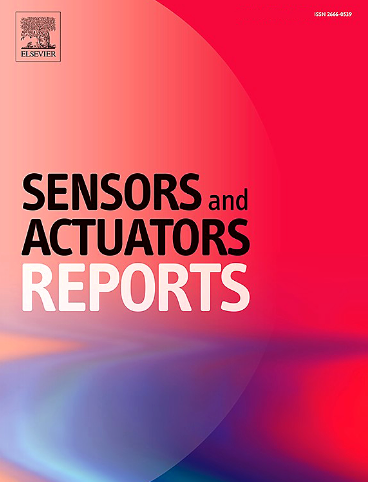分配丙二醇甲基醚乙酸酯(PGMEA)的微流控纸基分析装置(μPADs)的简易图案化
IF 7.6
Q1 BIOTECHNOLOGY & APPLIED MICROBIOLOGY
引用次数: 0
摘要
对于使用μPADs进行即时诊断的研究人员来说,基于微流控纸的分析装置(μPADs)的简单图像化非常有趣。本文首次介绍了利用丙二醇甲基醚醋酸酯(PGMEA)作为一种新型材料在μPADs上制造屏障,并利用扫描电镜(SEM)研究了这些屏障的形成机理。数字化和自动化点胶机用于屏障创建,证明了屏障在各种有机和水溶剂(包括碱性和酸性溶液)和表面活性剂存在下的稳定性。此外,我们还探索了利用PGMEA手工绘制μ pad快速图案化的可能性。PGMEA产生的屏障的稳定性为各种生物医学和化学分析奠定了坚实的基础。此外,我们还成功制备了用于生理盐水中碘酸盐含量定量测定和血型分析的μ pad,证明了该方法制备的μ pad在即时诊断方面具有重要的应用潜力。本文章由计算机程序翻译,如有差异,请以英文原文为准。

Facile patterning of microfluidic paper-based analytical devices (μPADs) by dispensing propylene glycol methyl ether acetate (PGMEA)
Facile patterning of microfluidic paper-based analytical devices (μPADs) is highly intriguing for researchers using μPADs for point-of-care diagnostics. For the first time, this work introduces the use of propylene glycol methyl ether acetate (PGMEA) as a novel material to create barriers on μPADs, with the formation mechanism of these barriers investigated using scanning electron microscopy (SEM). A digitized and automated dispensing machine is employed for barrier creation, demonstrating the stability of the barriers in the presence of various organic and aqueous solvents including alkaline and acidic solutions, and surfactants. Additionally, we explore the possibility of rapid patterning of μPADs by hand drawing using PGMEA. The stability of the barriers created by PGMEA lays a solid foundation for various biomedical and chemical analyses. Moreover, we use this method to prepare μPADs for quantitative measurement of iodate content in saline solutions and blood typing analysis successfully, proving that μPADs prepared by this method have a significant potential for applications in point-of-care diagnostics.
求助全文
通过发布文献求助,成功后即可免费获取论文全文。
去求助
来源期刊

Sensors and Actuators Reports
Multiple-
CiteScore
9.60
自引率
0.00%
发文量
60
审稿时长
49 days
期刊介绍:
Sensors and Actuators Reports is a peer-reviewed open access journal launched out from the Sensors and Actuators journal family. Sensors and Actuators Reports is dedicated to publishing new and original works in the field of all type of sensors and actuators, including bio-, chemical-, physical-, and nano- sensors and actuators, which demonstrates significant progress beyond the current state of the art. The journal regularly publishes original research papers, reviews, and short communications.
For research papers and short communications, the journal aims to publish the new and original work supported by experimental results and as such purely theoretical works are not accepted.
 求助内容:
求助内容: 应助结果提醒方式:
应助结果提醒方式:


